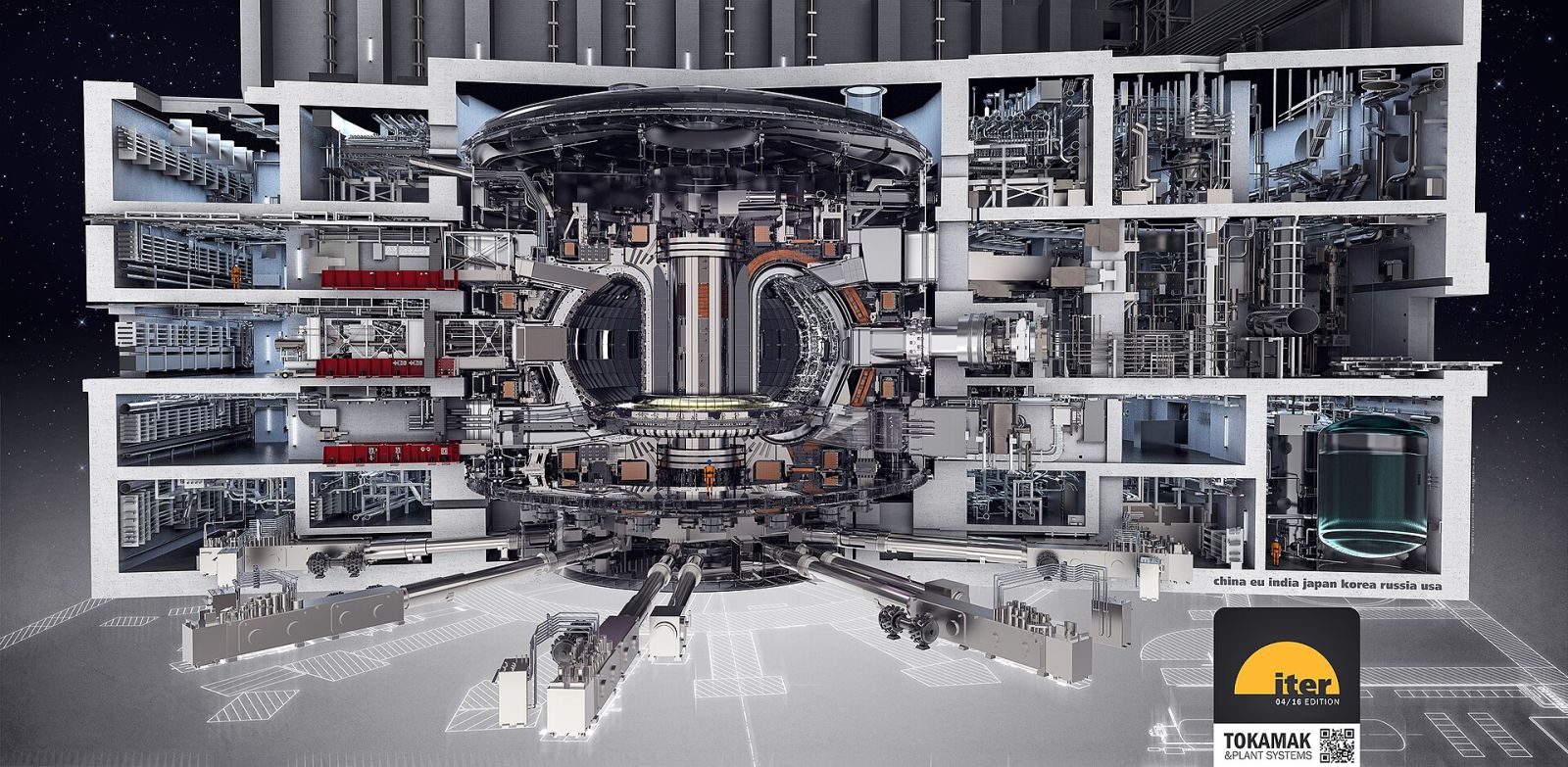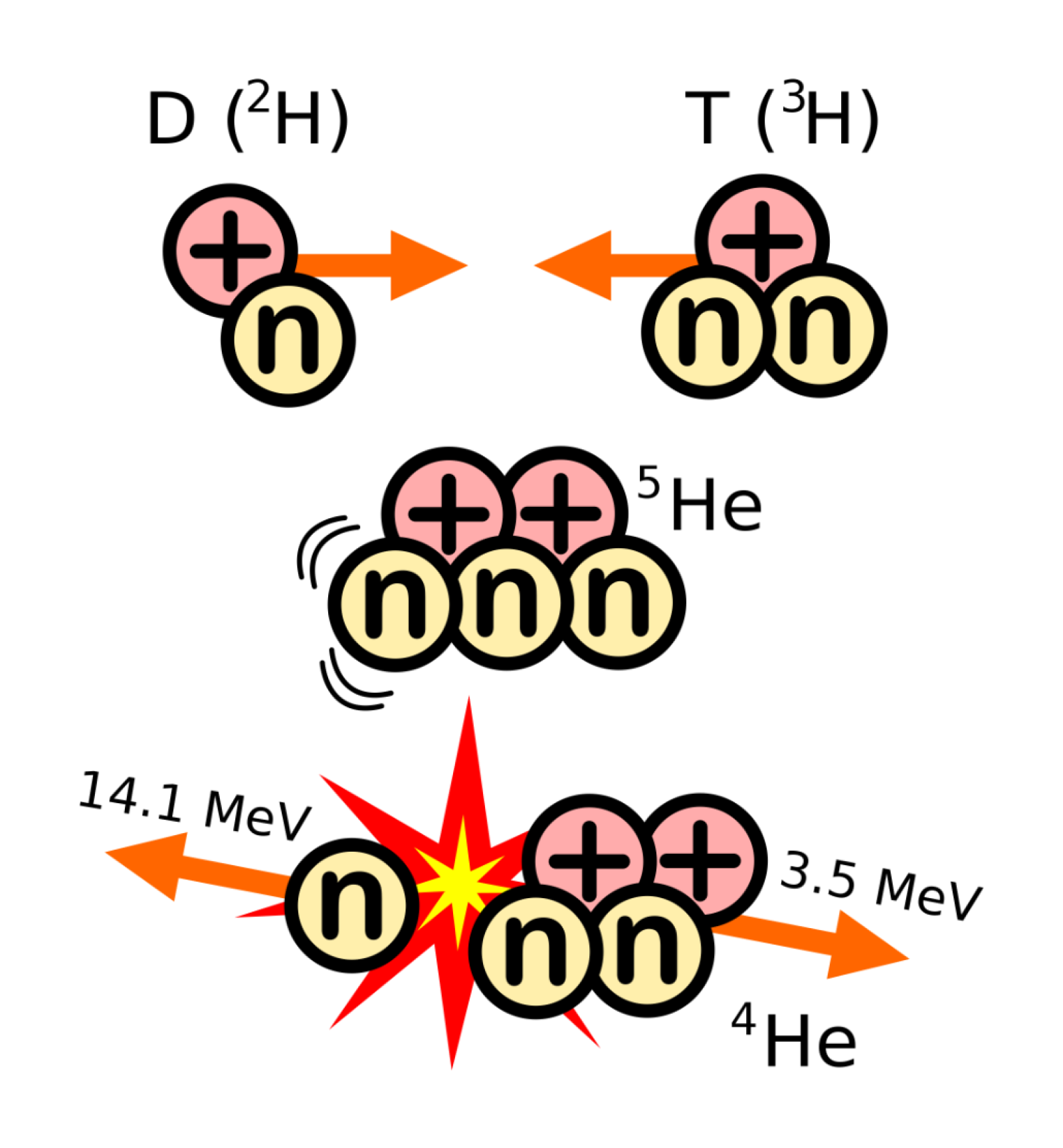Follow us on Google News (click on ☆)
Nuclear fusion is a process by which two light atomic nuclei, usually isotopes of hydrogen such as deuterium and tritium, fuse to form a heavier nucleus, thereby releasing an enormous amount of energy. This process is similar to what occurs at the core of the Sun, where extreme temperatures and pressures allow hydrogen nuclei to fuse into helium.

Cross-section view of the Iter infrastructure. The tokamak is visible in the center-left.
Image Wikimedia
One of the primary advantages of nuclear fusion is that it uses abundant and accessible fuels. Deuterium can be extracted from seawater, while tritium can be produced from lithium, which is also widely available. Fusion does not produce greenhouse gases, making it a much cleaner source of energy. It has the potential to provide a virtually unlimited amount of energy due to the nearly inexhaustible nature of its fuels.
A single gram (0.035 ounces) of fusion fuel can produce as much energy as several tons of coal. Compared to nuclear fission, fusion produces much fewer radioactive wastes, and those that are produced have a much shorter lifespan. This means that the challenges associated with the storage and management of nuclear waste would be significantly reduced.
For the fusion of two atoms to occur, it is necessary to overcome the repulsion of electrons located on the periphery of the atoms and then the repulsion of the nuclei themselves, as like charges repel each other. In the core of the Sun, intense gravity exerts a colossal pressure that allows these electrostatic barriers to be overcome. This pressure crushes the atoms together despite their repulsions, allowing the nuclei to fuse and release a tremendous amount of energy in the process.
In the case of a fusion reactor, the nuclei must be sufficiently heated to overcome the electrostatic repulsion between them. This requires temperatures on the order of several millions of degrees Celsius (tens of millions of degrees Fahrenheit). Two main techniques are currently being explored to confine the plasma (the hot gas where fusion occurs) and maintain these extreme conditions: magnetic confinement and inertial confinement.

Fusion of deuterium and tritium - Image Wikimedia
Magnetic confinement is used in devices like the tokamak, where powerful magnetic fields are employed to confine the plasma in a torus (a ring shape). Inertial confinement involves using lasers or particle beams to compress a small pellet of fusion fuel to very high densities and temperatures.
Despite its promises, nuclear fusion remains technically complex. It is necessary to maintain the extreme conditions required for fusion in a stable and controlled manner, develop materials capable of withstanding the intense conditions inside a fusion reactor, and make the process economically viable for large-scale energy production. Simply put, the reactor must release more energy than it consumes for its operation.
Projects like ITER (International Thermonuclear Experimental Reactor) in France are underway to demonstrate the feasibility of nuclear fusion on an industrially viable scale. If these efforts succeed, they could revolutionize the way we produce and consume energy, offering a sustainable and clean long-term solution.